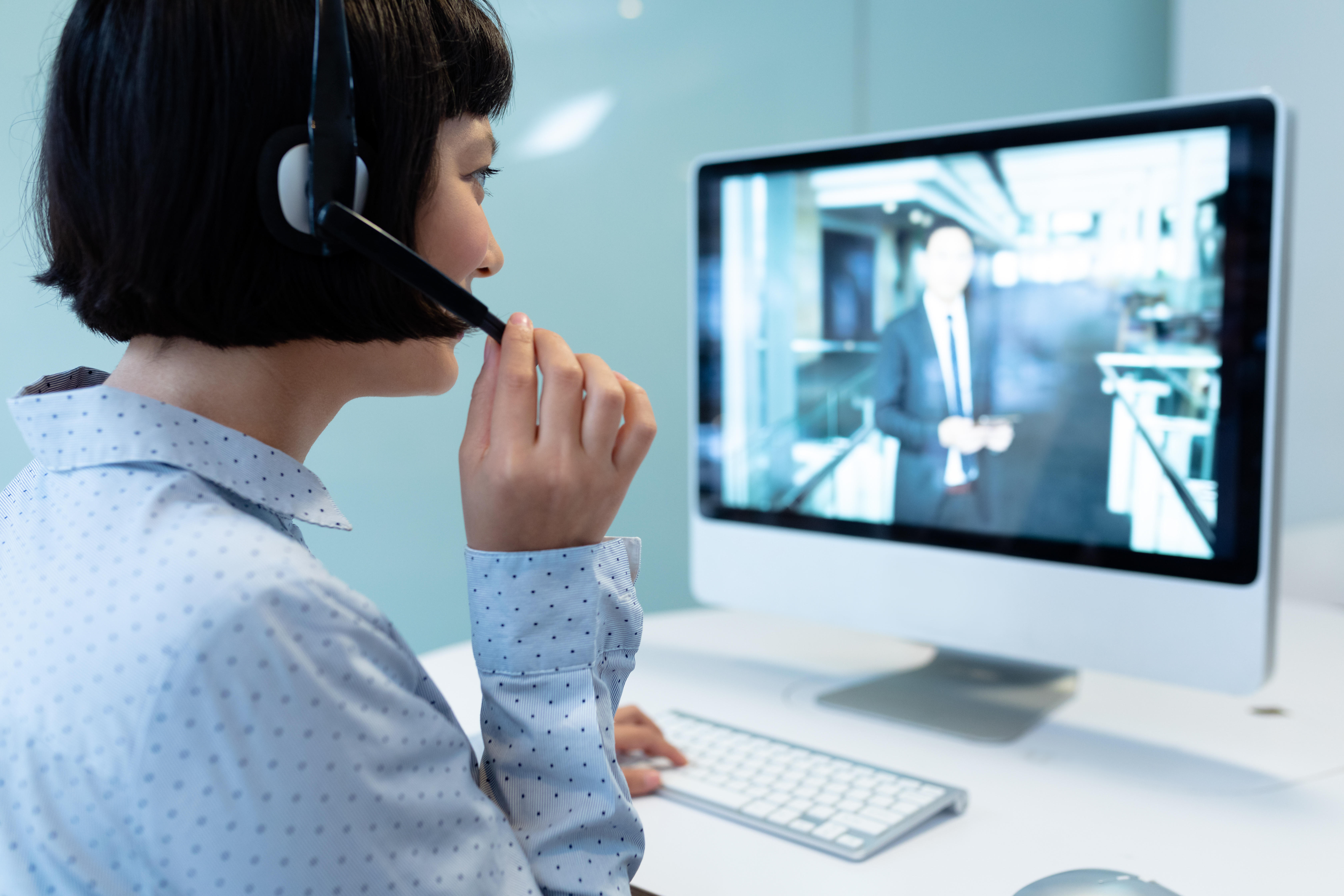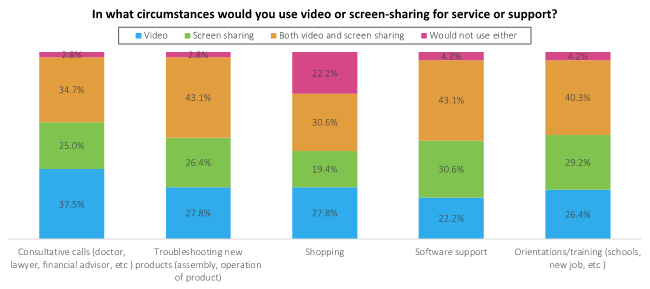When was the last time you used video or screen-sharing? Perhaps just today at a work meeting or over the last weekend when calling a distant relative or a child away at college? Or -- let’s be real—to talk with someone on a different level of the same house?
Video is a way of life, and it’s incredibly convenient. At work, a quick click gets us on a Zoom, Webex, or Dialpad meeting, for example. In our personal lives, a few clicks on a mobile device can get us on FaceTime or another visual service.
But what about when consumers want to interact with a company they do business with?
Although 77.2% of companies will offer some form of visual engagement (video and screen sharing) for customer interactions by the end of 2023, they’re not making it easy for consumers to use.
Video and screen sharing are typically escalation points from a customer phone call, webchat, SMS, or even AI-powered chatbot. They’re often kludgey set-ups that end up disconnecting the interaction from contact center translation and transcription capabilities, notation in the customer data record, or other agent applications.
Typically, the agent sends over a link and starts an entirely new call stream. The only exceptions are if video is integrated into the contact center (companies such as 8x8, GoTo, and Zoom do this, for example) or companies integrate a third-party platform (Glia, Recursive Labs, and Surfly, to name a few) into their contact centers.
Either way, the notion of “click-to-call” hasn’t extended to “click-to-video” from a website or via a mobile device on an SMS chat.
That’s quite frustrating for consumers, who say they would prefer to start in video for certain use cases.
We asked 502 consumers about when they would use video, screen-sharing, both, or neither in the following circumstances:
- Consultative calls (doctor, lawyer, financial advisor, etc.)
- Troubleshooting new products (assembly, operation of products)
- Shopping
- Software support
- Orientation and training (new jobs, school visits, etc.)
In every case, the vast majority would use some form of visual engagement (See chart below). In fact, the largest percentage across the board see value in using both video and screen-sharing.
With some vendor solutions, agents can click to launch a video during a customer call, but that is still an escalation point rather than a launch point empowering customers to decide at the outset they want to begin their interaction via a video or screen-share.
One example I’ve personally experienced is with Intuit. In order for me to interact, I must start with a webchat saying I want a call. To Intuit’s credit, a representative calls within minutes. Typically, I am reaching out because I’m having a software issue, so I know I need to screen-share. I have to convince the agent of this first, and then I go to a website and share a code to get the screenshare started.
I have measured my resolution time with and without screen-sharing, and it’s 80% faster with screen-sharing vs. without. That’s better for both me and Intuit—yet, I have to go through chat and a phone call to get there.
Companies can use technologies like WebRTC to make a click-to-video reality for their customers. Or, why not allow voice or chat triage bots to ask customers if they would like to video chat or screen share right up front?
Contact center and CRM providers that offer digital channels need to make it just as easy to launch a visual engagement as they do a chat, chatbot, or voice-only interaction. Customers clearly want this capability. They also need to integrate video into any other CX app or customer record.
It’s a missed opportunity that ultimately will improve customer satisfaction, operational efficiency, and possibly even revenue.











